
The first intifada (Palestinian uprising of 1987-1993) began in Gaza and very quickly spread throughout the whole of the West Bank. Unlike the second intifada in 2000, the Israeli Arab population did not physically join the Palestinian attempt to ‘shake off’, as the Arabic word means, the then 20-year Israeli presence in Gaza and the West Bank.
In the Wadi Ara village of Barta’a, part of which ended up on the West Bank side of the 1949 drawn Armistice Line and part on the Israeli side, the Palestinian East Barta’ans participated in the intifada whilst their close family members on the Israeli side, citizens of the State of Israel, watched in fear and trepidation as IDF soldiers climbed on to the roofs of their houses and launched tear gas shells over the Armistice Line - a one and a half meter deep ditch that runs between the two portions of the village - in order to quell disturbances on the other side.
The six-year long intifada took a heavy toll on the relationship between the Arab Muslim residents of East and West Barta’a, all of whom were members of the same extended family, or hamula (as known locally) – the best translation of that Arabic word would be clan. After a period of time and the Kabahas on the Israeli side refusing to join in the stone and rock throwing, burning of tires and forages into nearby Jewish communities to damage property, the local mosque in East Barta’a began to not only call local folks to prayer five times a day over the loudspeakers, just as easily heard in West Barta’a, but in between tried to entice their Israeli citizenship-holding family members to join in and “fight the fight, push the Jews into the sea and return Palestine to the Palestinians.”
When there was no response to the come-and-join call, the Palestinians – holders of Jordanian citizenship after that country annexed the West Bank in April, 1950 – began to call them traitors.
In the mid 1980s I began working at the Givat Haviva Educational Center situated in Wadi Ara, founded in 1949 by the Hashomer Hatzair kibbutz movement with a major focus on fostering positive relations between Jews and Arabs in Israel. Before the intifada broke out I felt very much at home taking groups of overseas students, academics, journalists, youth movement members, educators and many others from abroad to the what had been a rather sleepy off-the-beaten track village, a stone’s throw – excuse the pun – from the main Route 65 highway, a busy thoroughfare passing between the Menashe and Amir mountain ranges. The tours continued, but with far less groups and far less participants in each for the entire intifada period.
After the Oslo Accords the seminars and tours again became much sought after until the second intifada in 2000. A few years later, however, with the construction of the electronic security fence, they once more began to be an important part of the itinerary for many educational study groups visiting Israel.
As for Barta’a, the complications of being an Arab born on this or that side of the ditch that was designated to become the deepest of divides between those people, has always fascinated me, and no less so than most of those I have accompanied there over the last 25 years through thick and thin periods of the ongoing conflict between Israel and the Palestinians.
During the first intifada, whilst walking with a group of some 20 black American educators in East Barta’a close to the ditch, a young Arab boy – about 10 years old – suddenly threw an egg-sized stone in our direction. Out of the corner of my eye I saw him raise his hand but my reflexes were not quick enough to get out of the way and the stone hit the side of my head. It hurt – both physically and emotionally.
Interestingly enough, the black American teachers were positive the stone had been aimed at them because they were black! As a splitting headache developed at the same rate as a golf-ball sized bump on my head, a discussion broke out as to whom he had really intended to hit. I guess I still believe it was aimed at me - the Israeli - and they, to this day, well over 20 years later, will probably tell you it was meant for them but that the kid had a lousy throwing arm.
Looking back on that incident I now realize just how much of a watershed experience that was. I never told my husband about it or complained to him about the headache and was thankful that my hair was long, the bump on the right side of my head well covered. I didn’t tell him because I knew he would ask me to stop working at Givat Haviva and being involved in Israeli-Palestinian educational projects after this nasty encounter.
I made the decision to continue, not because I have a particularly stubborn nature, but based on the fact that I could not, would not, let a 10 year-old alter my belief that once people meet and listen to each other there is often an acceptance that each has a right to a different narrative, but they can discover that they share a great deal in common upon which it is possible to begin to build positively if they so desire.
The rock-slinging boy would now be somewhere in his early 30s. I wonder if he has ever given any thought to the day he chucked that rock and why the lady he managed to clobber is still bringing so many people to his village to meet and speak with those living on either side of their and our divide.
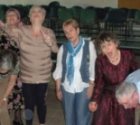 Let’s have a bit of Playback
Let’s have a bit of Playback-1372659501.jpg) Buying New Construction in Israel
Buying New Construction in Israel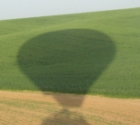 A lot of hot air - ballooning
A lot of hot air - ballooning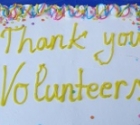 A new website in English - on Volunteering - Launched in Israel
A new website in English - on Volunteering - Launched in Israel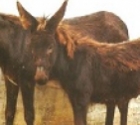 Help Needed for Abused Horses and Donkeys
Help Needed for Abused Horses and Donkeys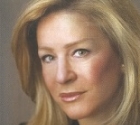 Heather's Heseg
Heather's Heseg Lydia Aisenberg
Lydia Aisenberg